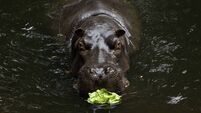About one-third of insects here under threat of extinction due to pollution, intensive farming, and habitat loss

Ladybirds (bóín Dé in Irish) belong to the insect family of Coccinellidae, 38 species of which occur in Ireland. For many, ladybirds symbolise good luck, protection and happiness
The ninth hottest July on record, with temperatures hitting 31°C, might account in some way for the emergence of insects in large numbers. Mind you, we shouldn’t be too surprised given that we have more than 11,000 insect species in Ireland.
In late July, I heard people complain about large numbers of ants getting into their homes, while humid weather had midges hyper active… and biting.







